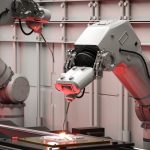DeepSeek’s newly launched R1 model has rapidly become a pivotal development in the generative artificial intelligence sector. This innovation not only challenges existing proprietary models but also prompts reevaluations within the AI value chain. As companies navigate this shifting landscape, significant implications emerge for various stakeholders in the industry.
Historically, proprietary AI models dominated the market, with major players like OpenAI setting the standard. The introduction of R1 alters this dynamic by offering a more open and cost-effective alternative, thereby intensifying competition and accessibility in AI applications.
Who Benefits from the R1 Model?
End users and AI application providers stand to gain the most from the advent of R1. Its lower cost and open nature make AI technologies more accessible, reducing expenses for businesses and enhancing the scalability of AI-driven solutions across various sectors.
How Does R1 Affect AI Chip Manufacturers?
AI chip companies like NVIDIA may face reduced demand as R1 requires fewer high-end GPUs for training and inference. This shift could lead to slower growth and necessitate strategic adjustments within the hardware supply chain to align with the evolving requirements of AI model training.
What Challenges Do Proprietary Models Now Face?
Proprietary model providers are under increasing pressure as open alternatives like R1 gain traction.
“DeepSeek R1 is a significant development in the generative AI landscape,”
stated Knud Lasse Lueth, CEO at IoT Analytics, highlighting the competitive threat posed by cost-efficient models that offer greater flexibility.
IoT Analytics’ analysis indicates that the marketplace is moving towards more efficient and open AI solutions, impacting both the competitive dynamics and the strategic approaches of key players. This trend marks a departure from previous dominance by closed, high-cost models, signaling a pivotal shift in how AI technologies are developed and deployed.
The emergence of DeepSeek’s R1 not only shifts the balance in the AI value chain but also offers new opportunities for businesses to leverage more affordable and adaptable AI tools. As the market continues to evolve, stakeholders must consider these developments to remain competitive and effectively integrate AI solutions into their operations.










